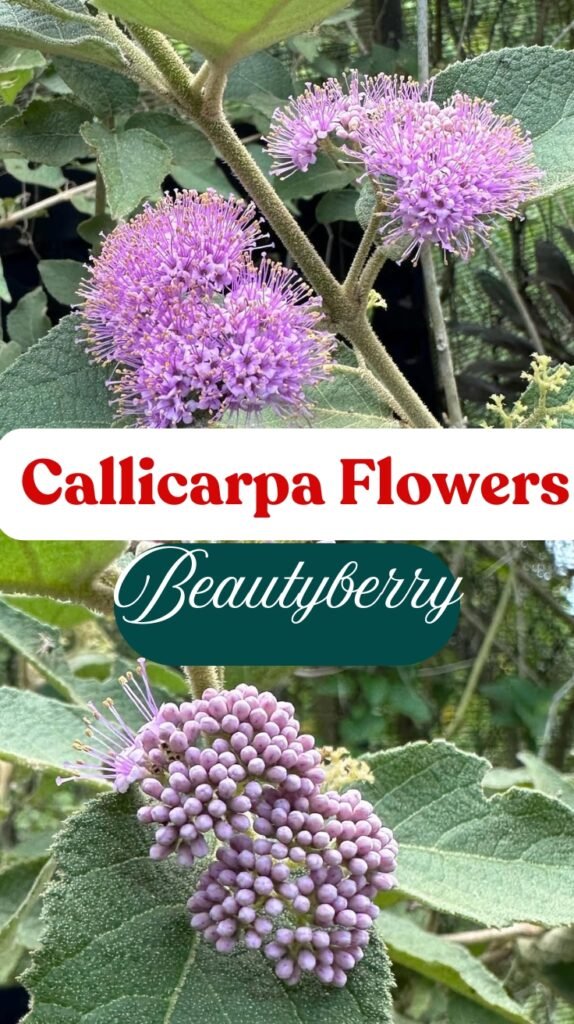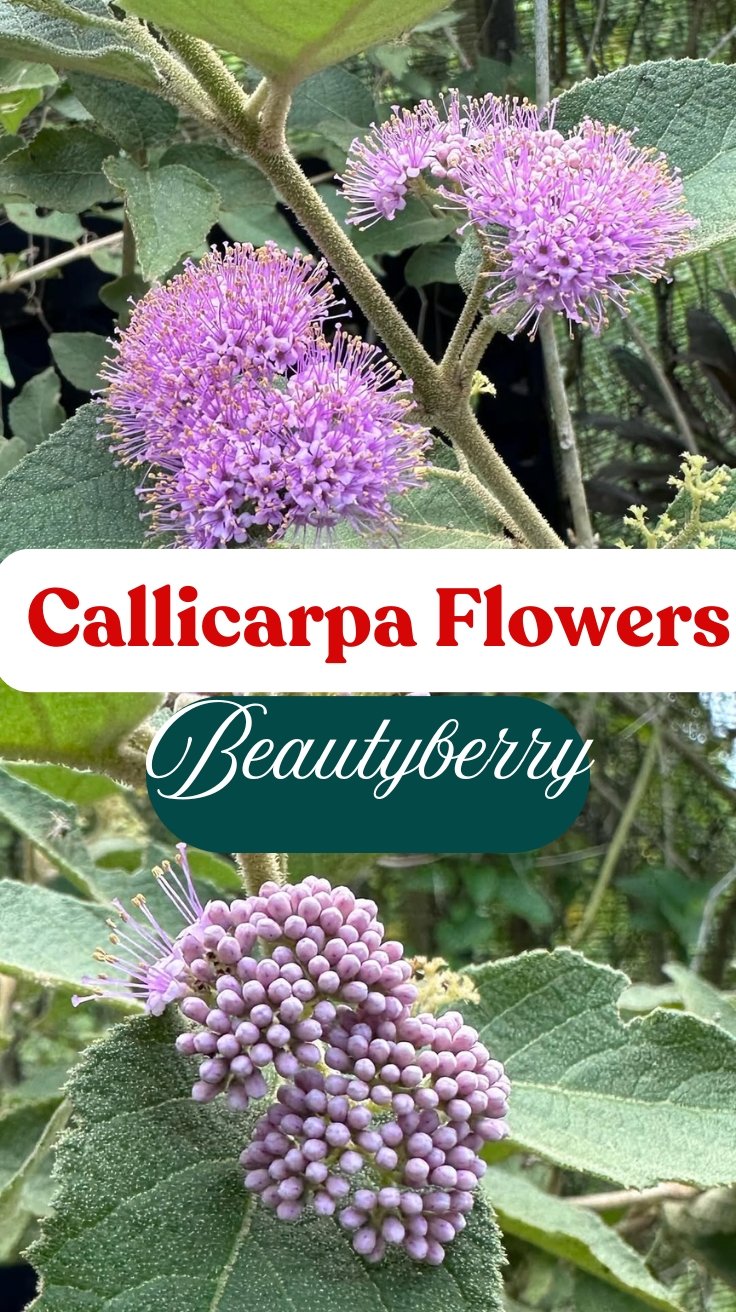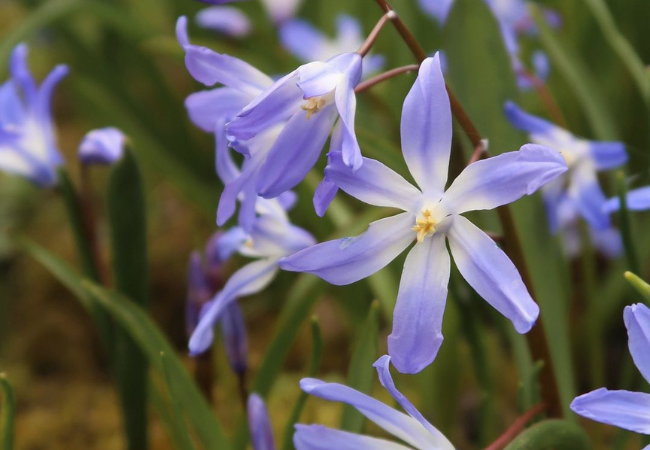Discover how to grow and care for Callicarpa flowers (Beautyberry) in the USA. Learn about species, toxicity, planting tips, and personal gardening insights from expert Ashley Scott.

With over a decade of gardening experience, I’ve fallen in love with the magical Callicarpa flowers—better known as Beautyberry. Their neon-purple berries steal the show in fall, but these shrubs offer year-round charm. Let’s dive into everything you need to grow these stunning plants, from choosing the right species to avoiding common pitfalls.
What Are Callicarpa Flowers?

Callicarpa, or Beautyberry, is a genus of shrubs famous for their clusters of vivid purple, pink, or white berries. While their tiny spring blooms are subtle, the berries that follow are jaw-dropping. Native to Asia and the Americas, species like Callicarpa americana (American Beautyberry) and Callicarpa bodinieri (Profusion Beautyberry) thrive in USDA zones 6–10.
Fun Fact: The name “Callicarpa” comes from Greek: kalli (beautiful) + karpos (fruit).
Popular Callicarpa Species for Your Garden
1. Callicarpa Americana (American Beautyberry)
A Southeastern U.S. native, this species boasts lavender berries and thrives in partial shade. I’ve used it in my Georgia garden to attract birds—they adore the fruit!
2. Callicarpa Bodinieri ‘Profusion’
This Chinese variety is my top pick for colder zones (5–8). Its deep purple berries are denser and longer-lasting than other types.
3. Callicarpa Tomentosa (Indian Beautyberry)
Though native to India, I’ve successfully grown this in Florida. Its fuzzy leaves add texture, and the pinkish berries glow in autumn light.
Pro Tip: Pair Beautyberry with goldenrod or asters for a fall color explosion.
Where to Plant Callicarpa Flowers
One of the most common questions I get is: “Where should I plant my Beautyberry?” Here’s what works best:
- Sunlight: Partial shade to full sun (6+ hours). More sun = more berries!
- Soil: Well-draining, slightly acidic soil (pH 5.5–6.5). Improve clay soil with compost.
- Spacing: Plant 4–6 feet apart—they can spread up to 8 feet wide.
Avoid: Waterlogged areas. My first Beautyberry died due to root rot in poorly drained soil!
Callicarpa Care: Simple Steps for Stunning Berries
Watering
Young plants need weekly watering. Established shrubs are drought-tolerant but produce better berries with occasional deep watering.
Pruning
Prune in late winter. I cut mine back to 12 inches every 2–3 years for bushier growth.
Fertilizing
Use a balanced 10-10-10 fertilizer in spring. Over-fertilizing reduces berries!
Bonus: Check out my guide to pruning flowering shrubs for more tips.
Are Callicarpa Flowers Poisonous or Edible?
Short Answer: The berries are mildly toxic to humans (may cause stomach upset) but safe for birds. However, Callicarpa americana leaves have been used in traditional mosquito repellents.
Pet Safety: The ASPCA lists Beautyberry as non-toxic to dogs and cats, but I keep mine out of reach—better safe than sorry!
Curious About Edibility? While not recommended raw, some foragers make Beautyberry jelly. Always consult an expert before tasting!
Growing Callicarpa in Pots

Yes, you can grow Beautyberry in containers! Here’s how:
- Pot Size: Use a 15–20 gallon pot with drainage holes.
- Soil Mix: Combine potting soil with perlite for drainage.
- Winter Care: Move pots to a sheltered area in zones below 6.
My potted Callicarpa bodinieri thrived for 3 years before I transplanted it!
Uses for Callicarpa Flowers
Beyond their beauty, these shrubs are functional:
- Wildlife Habitat: Birds like robins and cardinals rely on the berries.
- Landscape Design: Use as a hedge or focal point.
- DIY Repellent: Crush leaves for a natural mosquito deterrent (works in a pinch!).
Common Problems and Solutions
- Sparse Berries? Plant at least two shrubs for cross-pollination.
- Yellow Leaves? Check soil pH—it might be too alkaline.
- Pests? Aphids occasionally appear. Spray with neem oil or water.
Why I Love Callicarpa (Personal Story)
In my first garden, a Callicarpa americana was a gift from a neighbor. Despite my rookie mistakes (hello, overwatering!), it survived and became a fall showstopper. Now, I recommend Beautyberry to anyone craving low-maintenance drama.
FAQs
Q: Can Callicarpa grow in shade?
A: Yes, but berry production decreases.
Q: How fast does Beautyberry grow?
A: About 1–2 feet per year.
Q: When do berries appear?
A: Late summer through fall.
Ready to Grow Callicarpa?
Whether you’re planting Callicarpa bodinieri ‘Profusion’ for bold color or experimenting with container gardening, these shrubs are worth the effort. For more ideas, explore my article on unique fall plants.
Happy Gardening! 🌿
Ashley Scott
USA Garden Hub
https://usagardenhub.com





